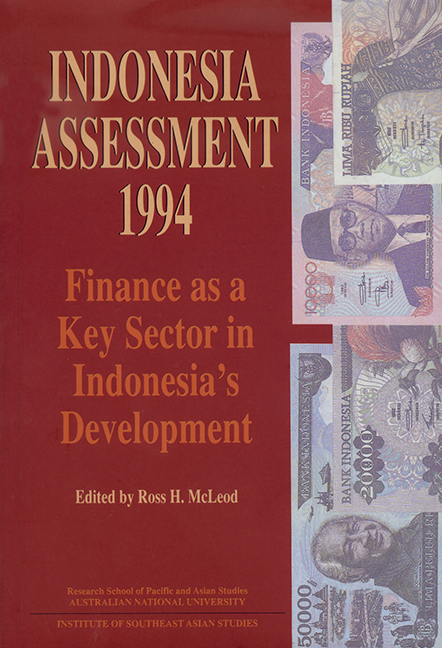Foreword
Published online by Cambridge University Press: 21 October 2015
Summary
The Indonesia Update Conference is a major opportunity for Australians to be informed about and to assess economic and political developments in our largest and most important neighbour.
The Australian National University, and especially those concerned within the Research School of Asian and Pacific Studies, deserve congratulations for the way this conference has attracted distinguished Indonesian representation, and for their contribution, and those of other Australian scholars, to knowledge about Indonesia in government, business, academia, the media and the wider community. This is reflected especially in the presence of Professor Dr Ali Wardhana who, as a senior Minister for twenty years and now as Special Adviser to the President, has played a distinguished role in overseeing the sound macroeconomic management of the Indonesian economy. Impressive attendance at this conference is also a tribute by the wider community to the strength of scholarship about Indonesia within this University.
More and more Australians are aware that Indonesia's economy has been growing strongly, and that Indonesia has played an important role in enhancing security and stability in Southeast Asia. But I wonder how many appreciate the scale of change which has taken place in Indonesia over the past thirty years, the dramatic nature of change which is continuing now, and the fact that Indonesia is becoming a very influential nation in world affairs.
By the. middle of the next century Indonesia will be, in terms of population, the third largest country in the world, after China and India. Indonesia's population will have overtaken that of the United States, and may be between 300 and 350 million. If Indonesia should sustain average GDP growth rates of recent years, by the year 2050 Indonesia's economy will be larger than that of Japan today and will be close to that of the United States.
Per capita gross domestic product by then is likely to be greater than that of contemporary Spain. If Indonesia's GDP should grow at an average of 7 per cent annually, per capita GDP would be higher than that enjoyed today by Australia and approaching that of Canada.
- Type
- Chapter
- Information
- Indonesia Assessment 1994Finance as a Key Sector in Indonesia's Development, pp. ix - xivPublisher: ISEAS–Yusof Ishak InstitutePrint publication year: 1994

